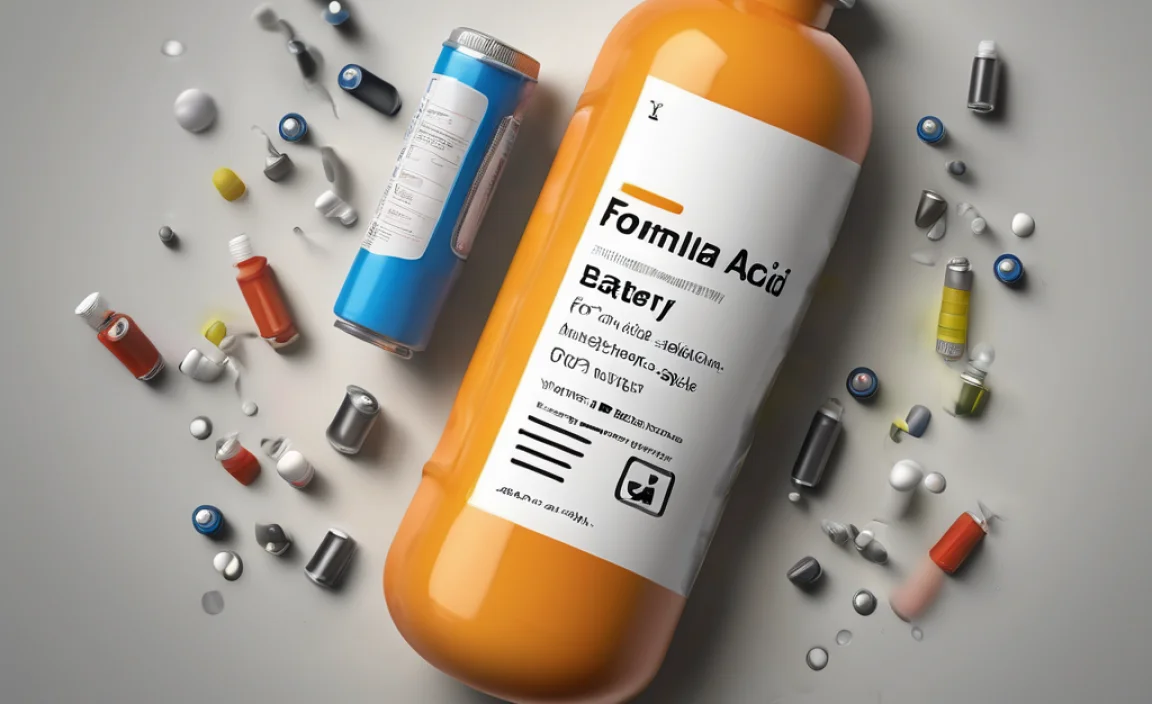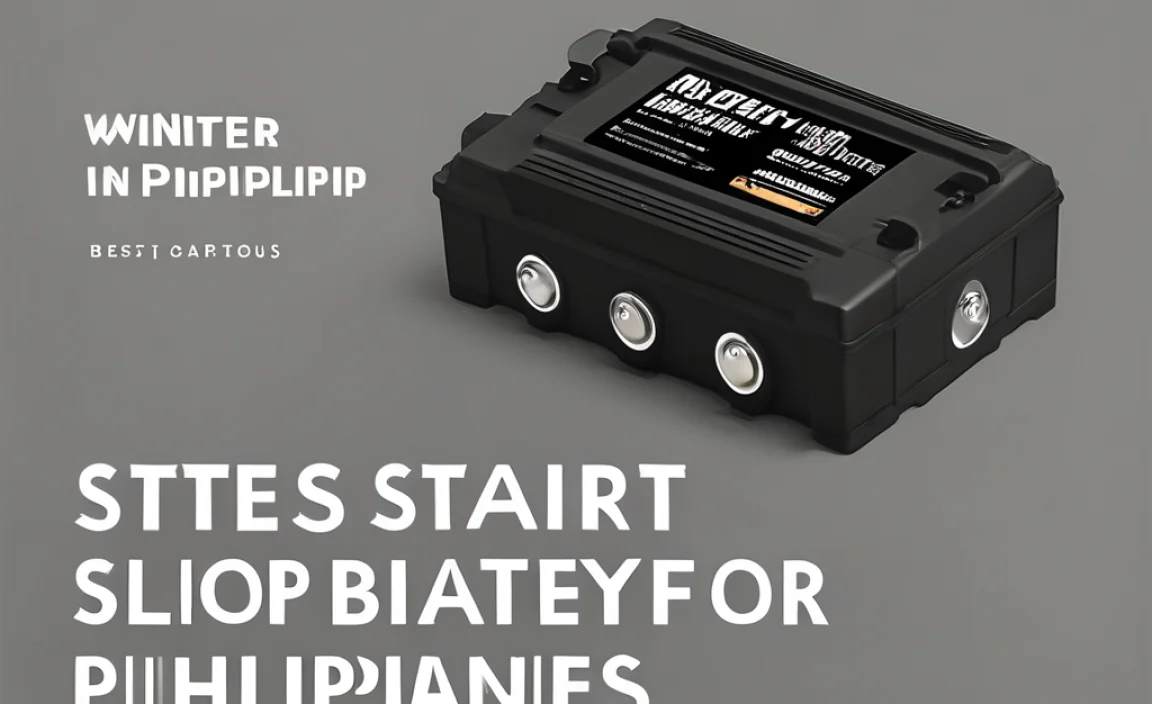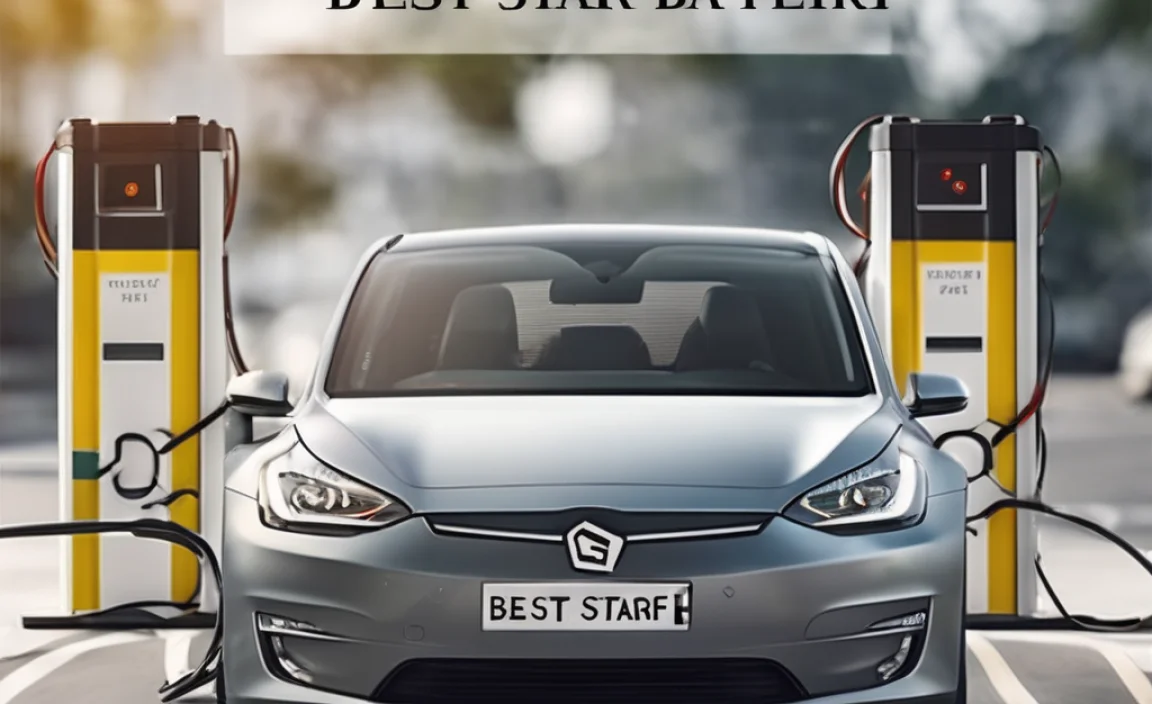A hose adapter for your boat motor might seem like a small part, but it’s a crucial fix that keeps your engine running smoothly and prevents costly damage. If you’re dealing with connection issues or need to replace a worn-out piece, finding the right adapter is key to a successful and safe boating trip.
Hey there, boaters! Roy Walker here. So, you’re out on the water, ready for a great day, and suddenly you notice a problem with your boat motor’s fuel line or cooling system. It’s a common frustration when a small part like a hose adapter gives you trouble. These little connectors are the unsung heroes that keep everything flowing correctly, from fuel to cooling water. Without the right one, you could face leaks, engine overheating, or even a complete shutdown. Don’t worry, though! Fixing this is usually straightforward, and I’m here to walk you through it, making sure you get the right hose adapter for your boat motor so you can get back to enjoying the waves with confidence.
Understanding Hose Adapters for Your Boat Motor
Think of a hose adapter as a translator for your boat’s mechanical language. It bridges the gap between two different sizes or types of hoses, or it connects a hose to a specific port on your engine or fuel tank. They are essential for a leak-free and secure connection, which is vital for both performance and safety. Imagine trying to connect a garden hose to your kitchen faucet without an adapter – it just won’t work! The same principle applies to your boat motor. These adapters ensure that the right amount of fuel gets to the engine or that coolant circulates efficiently to keep things from overheating.
A well-functioning hose adapter system prevents leaks of potentially flammable fuel or harmful exhaust fumes. It also ensures that cooling water can reach the engine block, preventing catastrophic damage from overheating. In essence, the right hose adapter is a small but mighty component contributing to your boat’s reliability and your safety on the water.
Common Reasons You’ll Need a Boat Motor Hose Adapter
Several scenarios might lead you to look for a new hose adapter. Understanding these will help you identify your specific needs:
- Wear and Tear: Boat engines are exposed to harsh marine environments – saltwater, sun, heat, and vibration. Over time, rubber and plastic components can degrade, crack, or become brittle. A worn-out adapter can develop leaks or simply fail to hold a secure connection.
- Replacement Parts: Sometimes, an adapter might break or get lost during maintenance. You’ll need an exact replacement to restore the system’s integrity.
- Upgrades or Modifications: If you’re upgrading your fuel system, adding a new accessory, or changing hose types, you might need a different adapter size or configuration to make the new components compatible with your existing setup.
- Winterization/Storage Prep: When preparing your boat for off-season storage, you might disconnect certain hoses. Using the correct adapters can help you seal off openings properly or reconnect them for the next season.
- Accessory Installation: Installing aftermarket accessories like external fuel filters, water separators, or additional cooling systems often requires specific hose adapters to integrate them with the main engine lines.
Types of Hose Adapters You’ll Encounter
Hose adapters come in various shapes, sizes, and materials, each designed for a specific purpose. Knowing these types will help you pinpoint the exact part you need:
By Connection Type:
- Hose Barb to NPT (National Pipe Thread): This is very common. The “barb” end grips the inside of a hose, and the NPT end screws into a threaded port on the engine or a fitting.
- Hose Barb to Metric Thread: Some outboard motors, especially those from European manufacturers, use metric threads instead of NPT.
- Hose Barb to Hose Barb: Used to connect two hoses of the same or different diameters. Often used to extend a hose or join two sections.
- Quick-Connect Adapters: These are becoming more popular, especially for fuel lines. They click into place, offering a secure and tool-free connection and disconnection. They often have a male end that fits into a female quick-connect port.
- Straight Adapters: The most basic type, creating a simple extension or connection in a straight line.
- Elbow Adapters (90-degree or 45-degree): Essential for routing hoses around obstacles or making tight turns without kinking the hose.
- T-Fittings and Y-Fittings: Used to split a single hose line into two outlets or combine two lines into one.
By Material:
- Brass: Durable, corrosion-resistant, and relatively inexpensive. A popular choice for many marine applications, especially for fuel and water systems.
- Stainless Steel: Offers excellent corrosion resistance, particularly in saltwater environments, and is very strong. This is often a premium choice.
- Plastic (Nylon, Acetal/Delrin): Lightweight, cost-effective, and resistant to fuel and chemicals. However, they can become brittle over time with UV exposure and extreme temperatures. Best suited for less critical or lower-pressure applications.
- Aluminum: Sometimes used, but can be prone to corrosion in saltwater if not properly treated or anodized.
By Application (Fuel vs. Cooling):
It’s crucial to use adapters designed for the specific fluid they will handle. Fuel line components must be fuel-resistant, while cooling system adapters need to withstand constant water flow and temperature changes.
Identifying the Correct Hose Adapter for Your Boat Motor
This is where we get practical. Getting the right adapter prevents leaks, ensures proper flow, and keeps your engine happy. Here’s how to figure out what you need:
Step 1: Identify the Hose Size
The most critical measurement is the inner diameter of the hose you need to connect. Look for markings on the hose itself, or use a measuring tape or caliper.
- Measure the inside diameter. Ensure you’re measuring the opening, not the wall thickness.
- Common sizes include: 3/8 inch, 1/2 inch, 5/8 inch, and 3/4 inch.
- Check for barb size: The “barb” is the ribbed part that goes into the hose. The adapter will usually be sized for a specific hose ID, e.g., “3/8″ hose barb.”
Step 2: Determine the Other Connection Type
What are you connecting the hose TO? This could be a threaded port, another hose, or a quick-connect fitting.
- For threaded connections:
- Thread Type: Is it NPT (common in the US) or a metric thread (often found on imported outboards)? NPT threads have a tapered profile.
- Thread Size: Common NPT sizes are 1/4″, 3/8″, or 1/2″. You can often find thread gauges or measure the outside diameter of the male threads (or inside diameter of matching female threads) and compare to a size chart. For example, 1/4″ NPT male threads measure approximately 0.540 inches in diameter. A reliable source for NPT thread identification can be found on resources like Engineering Toolbox.
- For hose-to-hose connections: You might need a straight adapter, an elbow, or a reducer/increaser if hose sizes differ.
- For quick-connects: Identify if you need a male or female end, and note the brand or type, as some quick connects are proprietary.
Step 3: Know Your Application (Fuel or Cooling)
This significantly impacts the material and rating of the adapter.
- Fuel Systems: Require fuel-resistant materials like brass, certain plastics (like nylon rated for fuel), or stainless steel. They must withstand gasoline or diesel and prevent leaks that could be a fire hazard.
- Cooling Systems: Need to handle water, antifreeze, and potential temperature fluctuations—brass or stainless steel are excellent here.
Step 4: Consider the Environment
Marine environments are tough. Saltwater, UV rays, and fuel can degrade materials. Always opt for marine-grade components.
- Brass: Good corrosion resistance; look for specific marine-grade brass.
- Stainless Steel: Excellent for saltwater, but can be more expensive.
- Plastic: Ensure it’s UV-stabilized and rated for fuel/water as appropriate.
Step 5: Consult Your Boat’s Manual or Identify the Existing Part
Your boat’s owner’s manual is your best friend. It often lists part numbers or specifications for components. If the old adapter is still there, take clear photos and look for any part numbers or manufacturer marks. Bringing the old part to a marine supply store can also be incredibly helpful.
Tools You Might Need for Installation
Fortunately, replacing a hose adapter is usually a simple DIY job that doesn’t require a massive toolkit. Here’s what you might need:
- Pliers: For gripping and turning fittings, or for squeezing hose clamps.
- Adjustable Wrench: Useful for various nut and bolt sizes, and can help in turning threaded fittings.
- Hose Clamp Pliers: Specialized pliers designed to grab and hold spring-style hose clamps, making removal and reinstallation much easier.
- Flathead Screwdriver: Commonly used for worm-gear style hose clamps.
- Rag or Towel: To wipe up any spilled fuel or water and keep the work area clean.
- Safety Glasses: Always protect your eyes, especially when working with fuel or in areas where debris might fly.
- Gloves: To protect your hands and provide a better grip.
- Thread Sealant (PTFE Tape or Pipe Dope): For threaded connections to ensure a leak-proof seal. Ensure it’s rated for fuel or the specific fluid if applicable.
Step-by-Step Guide: Replacing a Boat Motor Hose Adapter
Let’s get this done safely and correctly. Always disconnect your battery before working on fuel systems and ensure good ventilation.
Step 1: Safety First! Prepare Your Workspace
Ensure you are in a well-ventilated area. If you are working near the fuel line, disconnect the battery to prevent sparks. Have rags ready to catch any drips. Wear your safety glasses and gloves.
Step 2: Disconnect the Old Hose
Locate the old hose adapter. You’ll likely have hose clamps on either end of the hose connected to the adapter. Loosen these clamps using a screwdriver or pliers. Once the clamps are loose, gently twist and pull the hose off the adapter. Be prepared for a small amount of fuel or coolant to drip out.
Step 3: Remove the Old Adapter
If the adapter is threaded into a port on the engine or fuel tank, use an appropriate wrench to unscrew it. Turn it counter-clockwise. If it’s stuck, a little penetrating oil might help, but be careful not to get it into the fuel or cooling system if possible. If the adapter is connected to another hose barb fitting, you may need to use pliers to grip it while pulling the hose off. Some adapters may require specific tools depending on their design.
Step 4: Prepare the New Adapter
If your new adapter has threaded ends, apply thread sealant (PTFE tape or pipe dope) to the male threads. For NPT threads, wrap the tape clockwise around the threads, leaving the first couple of threads bare to ensure a good seal. Don’t use too much, as excess sealant can break off and clog small passages.
Step 5: Install the New Adapter
Thread the new adapter into the port or connect it to its intended fitting. Tighten it firmly with your wrench, but do not overtighten, as this can damage the threads or the fitting. Ensure it’s snug and facing the correct direction for your hose routing.
Step 6: Reconnect the Hose(s)
Slide the hose back onto the barb of the new adapter. Ensure it’s pushed on as far as it will go. Now, reposition the hose clamp so it’s over the barbed section of the adapter and tighten it securely. Make sure the clamp is providing even pressure around the hose. If you have a spring-type clamp, use specialized hose clamp pliers to stretch it over the hose and onto the barb.
Step 7: Check for Leaks
Once everything is reconnected and the battery is reconnected (if it was disconnected), start the engine. While the engine is running, carefully inspect the new adapter and hose connections for any signs of leaks. Smell for fuel fumes. If you see or smell anything, shut down the engine immediately and re-check your connections and clamp tightness.
Hose Adapter Material Comparison Table
Choosing the right material for your hose adapter is crucial for its longevity and performance in the marine environment. Here’s a comparison of common materials:
| Material | Pros | Cons | Best For |
|---|---|---|---|
| Brass | Good corrosion resistance Durable and strong Cost-effective |
Can corrode in very harsh saltwater over extended periods if not marine-grade Heavier than plastic |
General fuel and water lines, standard engine connections |
| Stainless Steel | Excellent corrosion resistance (especially 316 grade) Very strong and durable Resistant to most chemicals |
Higher cost Can be heavier |
Saltwater applications, high-pressure fuel lines, critical connections |
| Plastic (Nylon, Acetal/Delrin) | Lightweight Inexpensive Resistant to many fuels and chemicals |
Can become brittle with UV exposure and age Less durable under extreme stress or temperature May have lower pressure/temperature ratings |
Low-pressure cooling lines, non-critical fuel vents, areas with minimal UV exposure |
| Aluminum | Lightweight Reasonable cost |
Prone to galvanic corrosion, especially in saltwater, if not anodized or treated Can be less durable than brass or steel |
Less common in direct marine contact points for fuel/water; more for structural components sometimes. Not ideal for immersion. |
Common Pitfalls to Avoid
Even with clear instructions, a few things can go wrong. Here are some common mistakes beginners make and how to avoid them:
- Using the Wrong Size: This is the most frequent error. A hose that’s too loose will leak, and trying to force a hose onto a barb that’s too large can damage both the hose and the adapter. Always double-check your hose inner diameter and the adapter’s barb size.
- Incorrect Thread Sealant Usage: Using the wrong type of sealant or too much of it can cause problems. Always use sealants rated for fuel or water systems, and ensure they are compatible with your engine’s fluids. For example, some sealants can degrade if not rated for gasoline. Resources like the Boat Owners Network offer guidance on fuel system components.
- Overtightening Threaded Fittings: This can strip threads, crack the fitting, or even damage the mating port on your engine. Tighten firmly, but stop when you feel solid resistance.
- Not Securing Hoses Properly: Insufficiently tightened hose clamps are a leading cause of leaks. Ensure clamps are snug and positioned correctly over the barbs.
- Using Non-Marine-Grade Components: Automotive or general-purpose adapters may not be made from materials that can withstand saltwater corrosion or fuel types used in marine engines. Always opt for marine-grade parts.
- Ignoring Leaks: Even a small drip of fuel or coolant can lead to bigger problems, including fire hazards, environmental damage, or engine failure. Always check for leaks after installation and during operation.
- Failing to Disconnect Battery: When working on fuel lines, always disconnect the battery to eliminate the risk of sparks igniting fuel vapors.
Troubleshooting Common Hose Adapter Issues
Sometimes things don’t go perfectly. Here’s how to tackle a few common issues:
Issue: Hose Won’t Go Onto the Barb
- Possible Cause: Hose is too small, or the barb is too large. The hose material has hardened and become less flexible.
- Solution: Ensure you have the correct size adapter for your hose ID. If the hose is stiff, try warming it slightly (carefully, with warm water, not direct heat) to make it more pliable. You can also try a bit of soapy water or a specialized hose




